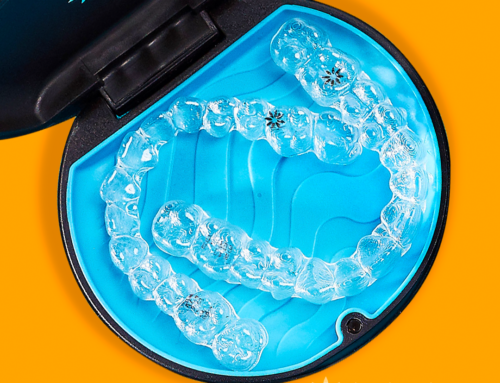Braces are appliances that orthodontists use to fix crowded and rotated teeth or jaws. Many people will get them as a teenager, however it is not uncommon for adults to benefit from them too. Rotated, crowded, and misaligned teeth can interfere with the way a person talks and eats. The best way to fix this is with braces. These appliances connect the teeth, bringing them together or pulling them apart. In either direction, they apply a steady force which helps realign the teeth in correct form.
Types of braces
If you and your dentist or orthodontist decide that you will benefit from braces, the doctor will prescribe an appliance that helps with your needs. This may include bands, wires, and other fixed or removable materials. There isn’t one method that works for everyone. Some of the various types of appliances are:
- Metal braces are the most popular type of appliance. They consist of metal brackets that are bonded to each tooth, and a wire that attaches to each bracket by a small elastic band. The elastic bands can be silver, clear to blend in, or other colorful options for kids to express themselves.
- Ceramic braces are the same concept as metal braces, except the brackets are tooth-colored or clear to blend in with the teeth. The wires are attached with clear bands. Adults may prefer these braces over children because they are less noticeable than metal braces.
- Lingual braces are similar to metal braces, except that the brackets and wires are placed on the tongue side of teeth. Patients may favor these over traditional appliances because they are hidden from view, but keep in mind this appliance may be more difficult to clean, and not applicable to severe cases.
- Invisalign looks like a clear retainer that can be removed from the mouth only when patients eat and brush their teeth. People who choose Invisalign will be given a series of 18 to 30 custom-made, plastic trays that work as aligners. These aligners are replaced every two weeks.
How to care for braces
It is especially important to practice good oral hygiene with braces because food and other debris can be stuck around the brackets and wires. This can put patients at high risk for cavities. Brushing at least twice a day, flossing, and even using a mouth rinse is crucial for people with braces. Patients should try to avoid certain foods such as popcorn, nuts, pretzels, and candies to lower the risk of their appliances breaking and from getting cavities.
How are they placed?
The first appointment to starting treatment is typically the longest. The orthodontist will start by placing a device in the patient’s mouth that helps keep it open and dry. While the teeth are dry, they will apply a bonding agent to the teeth and individually place each bracket and set them with a curing light. After each bracket is placed and cured, the wire and bands are inserted. The doctor or assistant will go over care instructions, and the patient will schedule future appointments for adjustments.
What is an adjustment?
While patients are in treatment, they can expect to see their orthodontist frequently for checks and adjustments. At adjustment appointments, the braces can be tightened by replacing the wire with a stronger one. Each time the braces are tightened, the teeth are moved a little closer to where they need to be. Adjustments tend to be quick appointments, and allow patients to have their bands changed.
Is Invisalign right for you?
White Plains Dental is a recognized Silver Invisalign provider, recognized by Invisalign for utilizing cutting edge technology, a growing patient case and expertise in the field. Whether you are looking to improve your smile or correct a clinical condition, we will find the best treatment option for you. Contact us today to schedule an Invisalign consultation!




